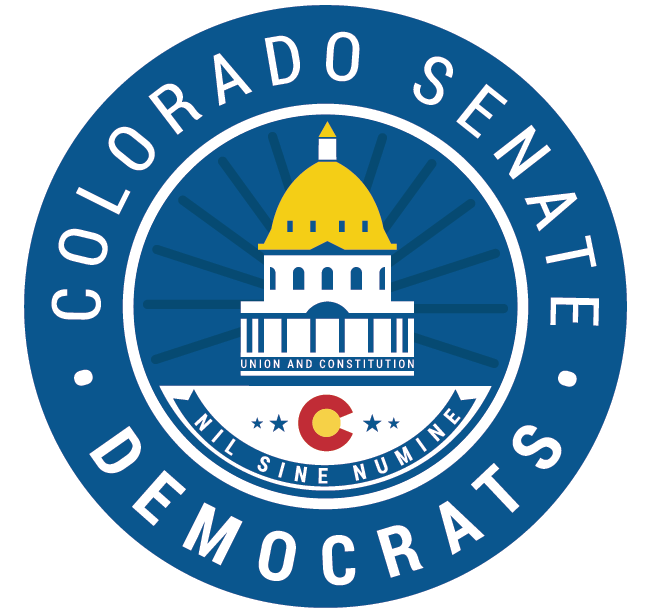JOINT RELEASE: Economic Recovery Continues, But Not for All
DENVER, CO – Democratic members of the Joint Budget Committee today released the following statements after the Legislative Council staff and the Office of State Planning and Budgeting delivered the December economic forecasts, both of which project higher General Fund revenue compared to earlier estimates, but highlight continuing uncertainty and budgeting challenges ahead.
“Today’s budget forecast shows a more positive outlook on our state’s recovery than previously expected, though significant challenges remain,” said JBC Chair Dominick Moreno, D-Commerce City. “While we have made strides in Colorado to provide much-needed relief to our communities, circumstances have improved for some, while others -- particularly low-income earners -- continue to suffer. Before we can truly bounce back from this devastating public health crisis, we will need to work diligently to ensure that our most vulnerable communities have the support and resources they need to equally recover.”
“This forecast shows Colorado’s economy is starting to bounce back, but it’s clear low-wage workers in our state are hurting and still have a difficult road ahead,” said JBC Vice-Chair Rep. Julie McCluskie, D-Dillon. “Though we passed bipartisan legislation to help bridge the gap for those who are at the most risk of falling further behind, individuals, small businesses, restaurants and schools desperately need more federal assistance to get through the months ahead. We’re going to use every tool we have at the state level to help Colorado build back stronger. I look forward to working with my colleagues to craft a balanced state budget that supports our schools and critical services and gets Colorado moving again.”
"Today's economic forecasts were reassuring because we are seeing an overall upward trend in our economic recovery that continues to be better than expected,” said JBC member, Senator Chris Hansen, D-Denver. “However, we are still far from pre-pandemic levels. CARES Act funds and our state-level COVID relief package have been helpful, but low-wage workers, the service industry, and many Colorado families are still in desperate need of economic relief, and all levels of government--particularly Congress--must do more to assist them."
“This has been a tough time for many Coloradans, particularly low-wage workers, and we’re going to do everything we can to help the people of our state recover and bounce back even stronger,” said JBC Member Rep. Leslie Herod, D-Denver. “I’ve heard from so many who are suffering right now. Coloradans who were already behind before are now further behind, even as our economy begins to turn around. We’ve targeted state assistance so that more Coloradans can have a fair shot to recover and bridge the gap until there is a vaccine and new federal aid. We’re going to continue prioritizing those who have been hit hardest by this pandemic, our communities of color, students and low-wage workers, and with additional state and federal resources, we will create jobs in Colorado and drive our economy forward.”
The Legislative Council staff (LCS) December forecast anticipates General Fund revenues to be $12.15 billion in FY 2020-21 and $13.14 billion in FY 2021-2022 – a $775.7 million and $590.9 million increase from the September revenue forecast respectively. These upward revisions reflect a persistent improvement in the state’s economic outlook. However, Colorado’s recovery continues to be divergent in nature – reflecting a “K-shaped” rebound. This means that while some sectors and households are bouncing back to pre-recession levels, others continue to struggle.
The Office of State Planning and Budgeting (OSPB) anticipates that General Fund revenue will be $12.48 billion for FY 2020-21, which OSPB revised upward by $222 million relative to its September estimate. For FY 2021-22, OSPB projects General Fund revenue will be close to $13.47 billion, which OSPB revised upward by $626 million relative to its September estimate. LCS and OSPB predict that revenue subject to TABOR will come in below the Referendum C cap during this forecast period, so TABOR refunds are not expected.
Both LCS and OSPB also identified downside risks to the forecast including the possibility of long-term economic “scarring” as well as the short-term increase of COVID-19 cases. As stimulus programs expire, a pullback in consumption and investment is also a potential threat to economic instability. On the flip side, upside risks to the estimate were identified, driven by the anticipated COVID vaccine distribution, potential additional federal stimulus support, and sustained resiliency shown by innovations adopted across consumer and corporate behaviors.

